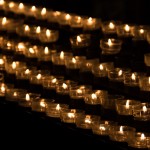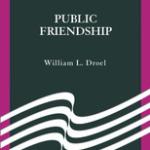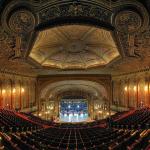In April 1994 CBS and N.Y. Times sponsored a survey on U.S. religious beliefs. Specifically, Catholics were asked about the Eucharist: Is it a “symbolic reminder of Christ” or “changed into Christ.” Over 65% of Catholics back then said “symbolic.” Among all Catholics, 51% of those who were weekly worshipers said “symbolic.”
The survey results led to articles in Catholic magazines and newspapers. Adult education efforts increased in some places. In 1997 one New York diocese conducted a discussion process on dogma in several parishes. Generally the participants were those most connected to the parish. Through an evaluation survey diocesan leaders learned that 63% believe that the Eucharist is a “symbolic reminder.” It has not literally “become” the body and blood of Christ.
In June and August of this year Pew Research Center (www.pewresearch.org) released results of a similar survey. Nearly 70% of Catholics say that during Mass, the bread and wine used in communion “are symbols of the body and blood of Jesus Christ.” Less than one-third say that “during Mass, the bread and wine actually become the body and blood of Jesus.” About 20% claim to know correct Catholic teaching but they reject it. Over 40% claim to know Catholic teaching but they get it wrong.
So once again in 2019 Catholic leaders are bemoaning confusion among fellow Catholics.
Survey questions can always be deconstructed. The choices given might be too stark. There are levels of correct appreciation of real presence. The Eucharist is both a symbol and the real body and blood of Christ. A symbol resembles what it signifies. A sacrament contains or is what it symbolizes. Marriage is an example of a super-symbol or sacrament; it represents love plus it is God’s love in action.
Catholic preaching and teaching have to improve. Some Catholic deacons, priests and teachers are fuzzy on correct Eucharist dogma. For example, some of them like to contrast Catholic understanding of the Eucharist with the Protestant understanding. They invariably get the Protestant part wrong and in so doing muddle the Catholic part. Why make the contrast in a sermon? Why imply that there is a single Protestant understanding of the Eucharist? Martin Luther (1483-1546), don’t forget, broke with other Reformers over his insistence on the real presence in the Eucharist. And, whatever the differences might be between Anglicans and Catholics, the Eucharist itself is not one.
One Catholic bishop reacting to the Pew survey says that it is no excuse to get the Eucharist dogma wrong “as long as [Catholics] are committed to the poor, or committed to social justice.” This is another straw contrast. What is the evidence that a high percentage of Catholics know and practice Catholic social doctrine on labor relations, private property, respect for the dying and the like any more than they know and practice the Eucharist dogma? To sustain Catholic endeavors for peace and justice there has to be an encounter with the real presence of Christ’s mystical body out in the world. Likewise, no genuine belief in the Eucharist at Mass makes sense without action to improve one’s home, neighborhood and workplace.
Further, although the term transubstantiation is a way to explain a major part of the Eucharist process, it is based on Aristotle’s distinction between matter and form, between substance and accident. What Catholic today has an acquaintance with Hellenic philosophy or with St. Thomas Aquinas (1225-1274)? I taught college philosophy for over 30 years, including three semesters at a seminary. It was slow going, not only because the teacher was inadequate but because no student had ever encountered Plato or Aristotle and the like. The only exception was an occasional coed who had read Aquinas’ paragraphs on God’s existence at her Catholic high school. A person can know correct Catholic teaching on Eucharist without explaining substance and accidental properties. Language that maybe was helpful in the past adds a challenge today. Precise language about the real presence is needed.
Finally, it is difficult for any denomination or religion to maintain dogma in a culture of relativism. One White House advisor, a Catholic, says there are alternative facts. Another advisor to our president, a Catholic, says truth isn’t true. Everywhere are heard assertions of opinion that substitute for knowledge. Who’s to say then that any church teaching has solidity?
It is equally difficult to maintain dogma in a culture that prizes irony and scoffs at mystery. The challenge is to restore reverence in a culture of foul language and insincere greetings. Ours is a culture in which the White House is headquarters for boorishness, ostentation and the profane. Ours is a culture weak on symbolic imagination and devoid of enchantment. Small gestures like bowing in the communion line or weekly participation in a benediction service sow seeds of reverence. Movements like #Me Too can in time support a culture in which people are reverenced as free subjects, not objects of convenience. Artists too push forward a deep culture by exploring the alluring, the transcendent and the depths or heights of possibility. Anything that pauses for meaning deepens appreciation for mystical reality. Any conversation or song or novel that pushes beyond the inane superficiality of Miley Cyrus and so-called reality TV contributes to a culture of real presence.
Droel’s booklet, Monday Eucharist, comes from National Center for the Laity (PO Box 291102, Chicago, IL 60629; $6)









